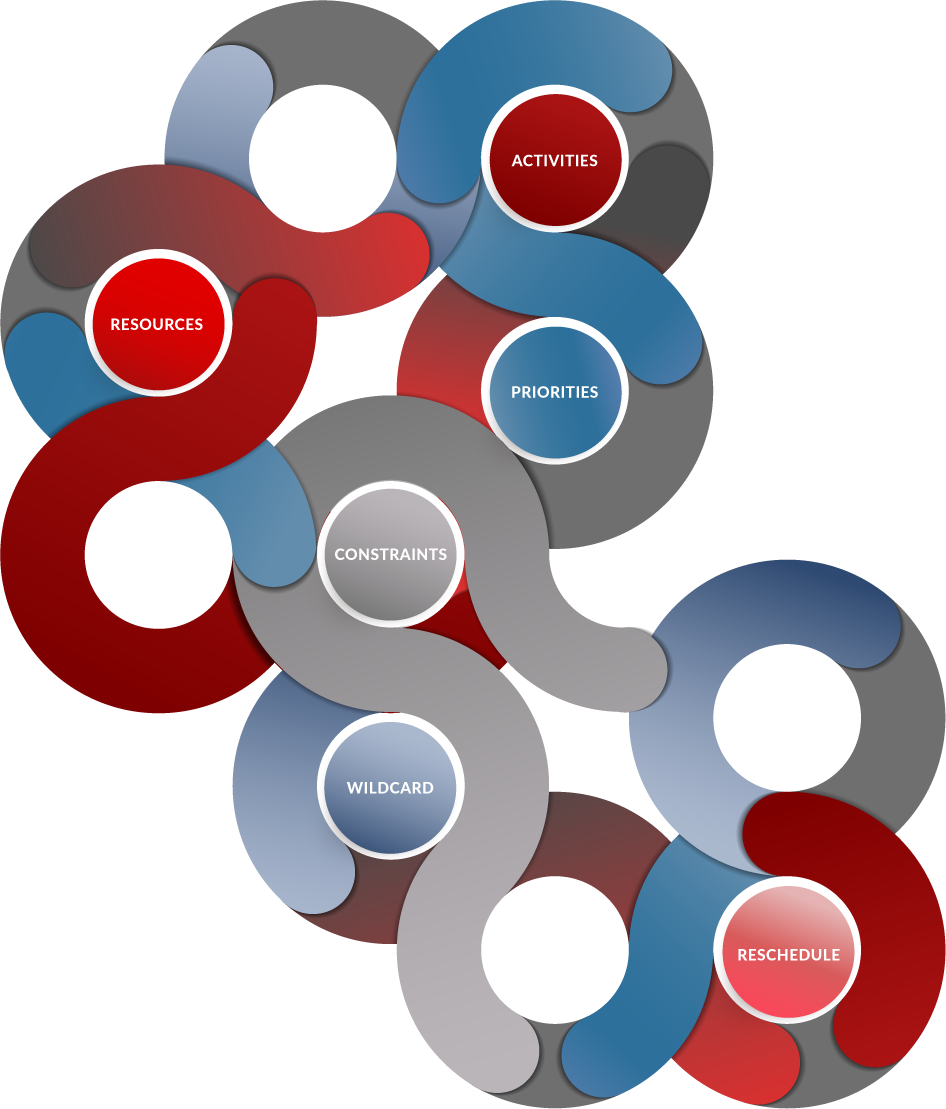FAST IS TRULY UNIQUE
27 Advanced Modelling and Solution Capabilities. No Other Scheduling Apps Have All Of These!
Why FAST Scheduling for Manufacturing?
Vehicle and Machinery Manufacturing, Food Product Processing, Garment and Apparel Manufacturing, and Chemical Production are among the many activities where scheduling requires the coordination of equipment, people and supplies. All of these resources can constrain manufacturing schedules.
The FAST scheduling approach is designed to handle the unique requirements of these environments.
✓ Coordinate equipment, raw materials, and people shared by many activities
✓ Revise schedules with minimal impact on promise dates
✓ Schedule or Unschedule one, many, or all activities simultaneously
We Understand Manufacturing Scheduling Requirements
The FAST scheduling technique is currently used by Fortune 500 manufacturers who had previously used large staffs familiar with shop floor constraints, their company’s business practices and the link between product demand and the supply chain. Because manufacturing has many constraints imposed by limited capacities on machines and locations, FAST is idealized for those environments. It is equally useful for smaller operations such as machine shops and parts manufacturers because of its ability to model complex constraints.
Solutions found by FAST are always constraint feasible. That is while building the schedule, no infeasible possibilities are examined unless the user relaxes a constraint to see how badly new capacity is needed. It is also very easy to try different resource availability scenarios (What If Planning) to plan future expansion or contraction possibilities.
FAST has been designed around requirements for rescheduling, recognizing that most of the effort by manufacturing planners is spent revising timelines that have been previously developed. It is critical that manufacturers manage their changes with minimal impact on promise dates, planned supply purchases, preventive maintenance schedules and other external factors. Of course, if a timeline is empty, FAST can schedule all activities at once, or any subset that the user desires.
FAST allows easy visibility of work-in-progress inventories, machine usage profiles, and critical constraining resources. It is often used by manufacturers to find their production bottlenecks.
In FAST, time is considered to be a continuous variable meaning that it can take on any specific values over the time horizon being planned. No “buckets” of hours, days or any other pre-defined intervals are assumed as in schedules based on spreadsheets. Activities can be any duration, not just one that is a number of fixed-length intervals. Similarly, resource availability can be any amount (any real number quantity) and that amount can change at any time, not just at pre-determined interval boundaries.
The power of the FAST technique is its ability to handle the most complex requirements found in manufacturing while being easy enough to use users can master its capabilities quickly and easily.

Understanding The F.A.S.T. System
In the last twenty years, research on how to develop near-optimal schedules for real environments was sponsored by NASA, industry and academia. The results have been a set of techniques collectively called “Finite Capacity Scheduling” that utilize the best capabilities of human schedulers along with the power of sophisticated computer techniques to produce schedules that are guaranteed to be feasible and are very effective in allocating resources. These techniques are practical in several respects. They are efficient, they can be used to schedule or reschedule with minimal impacts on the organization, they can be used to analyze potential changes to operational practices and they are easy to use. That is why so many of the leading Fortune 500 companies now use them.
Successful Solutions
The developers of the technique used by Unique Scheduling Solutions have been pioneers in the development of practical finite capacity scheduling techniques. The particular technique available to our subscribers goes by the acronym “FAST” which stands for “Five-Agent Scheduling Technique.” It is a term inspired by artificial intelligence and uses five sets of logical rules to perform the scheduling. Each set of decisions is performed by an “Agent” i.e. a set of rules mimicking how a successful scheduler makes decisions. Aided by mathematical computations, the “Agents” produce a high-quality (often even optimal) solution for the user to consider and manipulate further if desired. The Agents’ rules and the underlying mathematics are proprietary to Unique Scheduling Solutions, LLC.
The FAST System is designed to support the scheduler who faces even the most complex planning problems.

Scheduling problems with relatively simple descriptions can be solved efficiently and even optimally with a handful of compute-based techniques. Unfortunately, most real-world problems defy these theoretically-based techniques because their environments do not match the simplifying assumptions that those techniques assume. This is especially true when describing a supply chain or operations planning environment. The FAST system removes restrictions found in many schedulers, even those currently found in Operations Management, ERP, and MRP II applications.
This leaves most operational environments depending on human schedulers who know the peculiarities of how their organization functions and who have become experts in fitting together complicated activities related to each other though the use of shared and often scarce resources.
We have all seen the rooms filled with grease boards and people using voluminous e-mails, text messages, and phone calls to cobble together schedules that are feasible to execute and do a reasonable job of utilizing resources.
It is amazing how well these professional schedulers perform their duties! However, it often takes them many hours, often requires several of them, and often requires a full-time effort to build and maintain the timelines and corresponding resource assignments. The FAST System is designed to support the scheduler who faces even the most complex planning problems by providing appropriate capabilities to enhance both the productivity of the schedulers themselves and the operational efficiency of the schedules they produce.
Get Started Today
See the benefits of our scheduling system within minutes. Easy user interface.
